I love a good puzzle. It’s the one factor that is consistent in most of my favorite games – the integration of a clever, puzzle-like mechanic. So, I was immediately interested in Gearworks, the second game from Flag Dash designer Kirk Dennison and PieceKeeper Games.
Kickstarted in 2017, Gearworks tasks players with positioning gears and building steampunk contraptions in a workshop. Mechanically, it’s a combination of careful hand management and area control with the gear cards you will collect, and the result is an interesting, card-driven taken on several mechanics I already enjoy.
How Gearworks Plays
To start, you’ll create a 5×4 grid using the game’s 9 gear tokens. Each row and column coordinate will be home to one card and you’ll seed four of them to start the game (in a set number of positions).
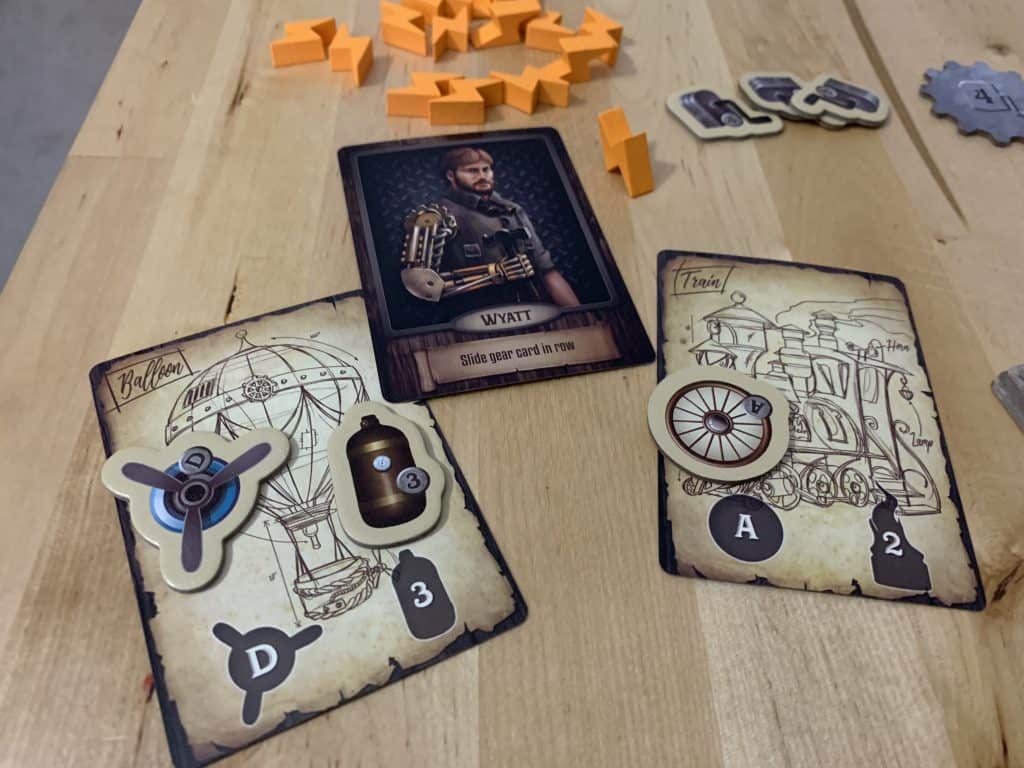
There are three each of the nine different parts and spark tokens that you’ll use to coordinate and manage your moves in the process of trying to build certain contraptions. You’ll also get a custom tinkerer with a unique player power to start the game.
Players will each get a handful of gear cards. On your turn, you’ll play one of them to the grid – following basic placement rules. In each column, you can only have one of each of the four colors. In the rows, the gears must be placed in ascending or descending order depending on if they are pointing up or down (the initial cards you place will give you a starting point, but your first placement will determine if that row is ascending or descending). Because they are ascending and descending, you can have multiple cards in a row of the same number.
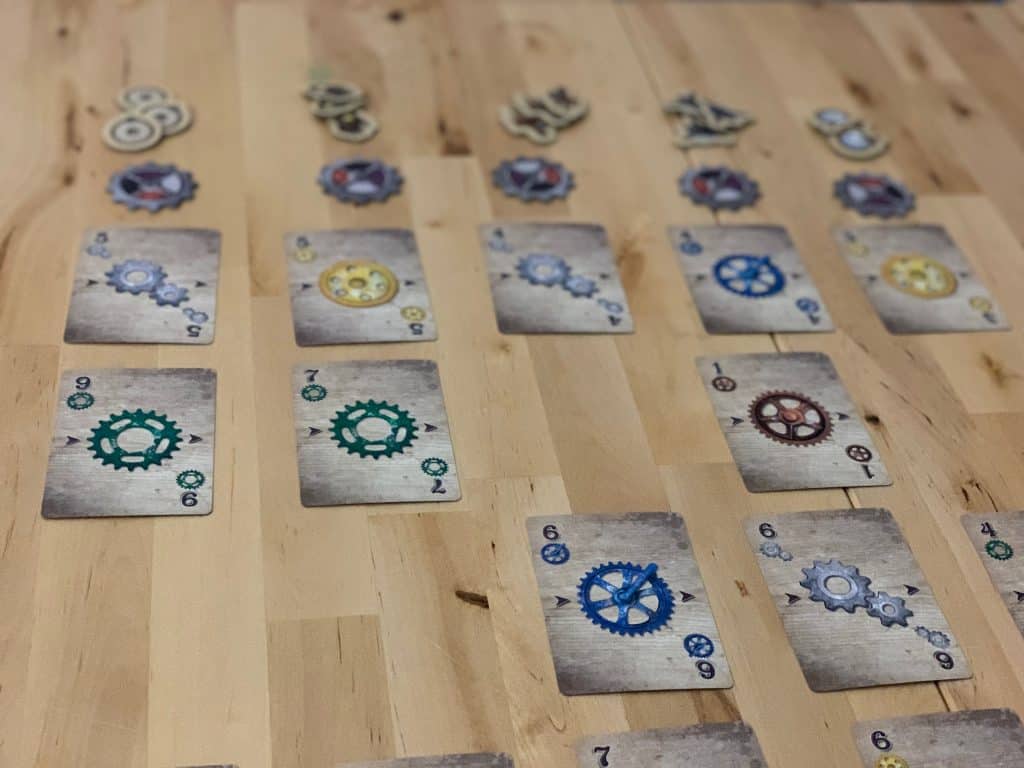
The interesting part of all this is not the sudoku puzzle of where your cards go, but the way in which you gain control of that column or row by placing your cards there. The gear tokens have four colors on their backs and you’ll rotate them to match if you have control or not. The game will continue like this until everyone passes (meaning they can’t place anymore). Sparks are available to help you draw more cards, replace cards in the tableau, draw new contraption cards or re-enter a round after you’ve passed (important if people build over things and change your options).
Finally, at the end of the round, players will score parts based on which columns and rows they controlled, and those parts can be used to complete contraption cards. The winner is the player with the most points – which you’ll receive for contraption cards with parts on them (9 for both parts, 4 for one), unused parts, and any sparks leftover.
What We Like About Gearworks
Like I said, I love a good puzzle, and that’s exactly what Gearworks is. You’ll spend plenty of time trying to determine what other people can do, how to drop a card in just such a way that other players cannot play their own and block out certain color combinations. It’s difficult to wrap your mind around at first, but after a few plays, the intricacies start to become apparent. This is when the game really got its hooks in me.
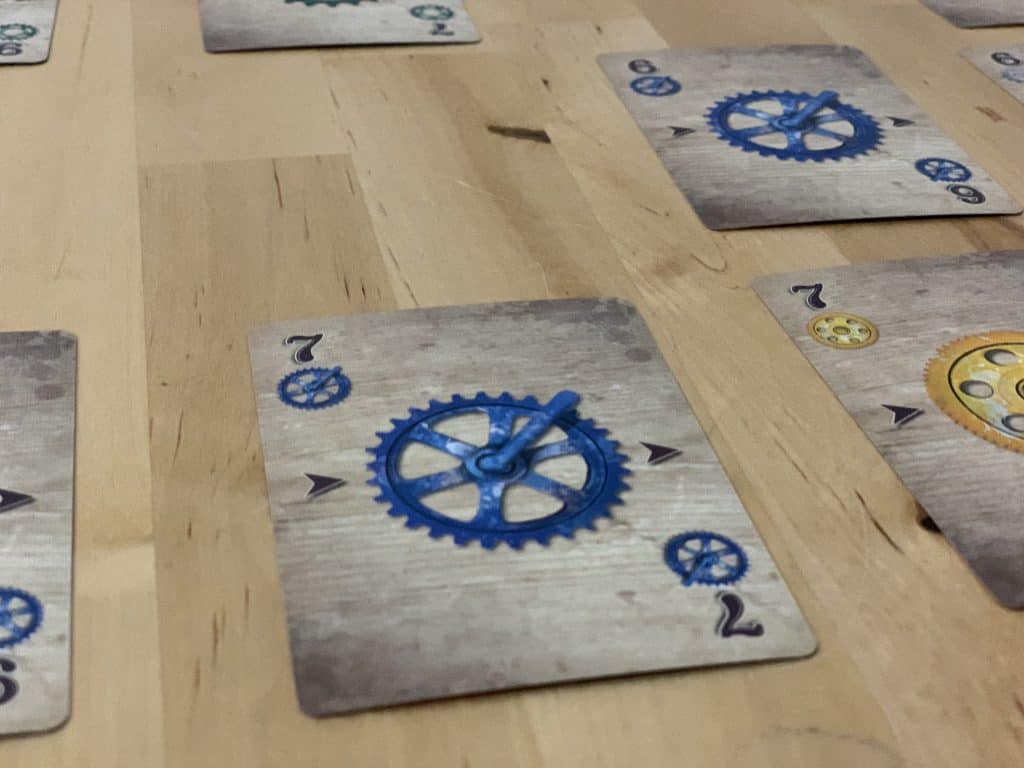
Visually, the game looks fantastic, combining a fun steampunk aesthetic with colorful illustrations and chunky bits that are fun to manipulate. Card quality is solid and it’s easy to tell the difference between the items you’re playing with. For an inexpensive, small box game, Gearworks looks and feels good in your hands.
While the puzzle mechanics don’t sit well with everyone, the basic idea of the game is simple enough that it’s fairly accessible for new gamers. And it has a great solo mode that works perfectly for people who are puzzle-head gamers like myself.
What We Didn’t Like About Gearworks
At the highest player count, the game starts to feel exceptionally tight, and it almost comes down to luck of turn order and the draw whether you’ll manage to pull something out in the end. Scores were routinely gapped, with the winner having more than twice as many points as the last player which isn’t an ideal situation. Two or three players, however, is much smoother without too much restriction on your play options.
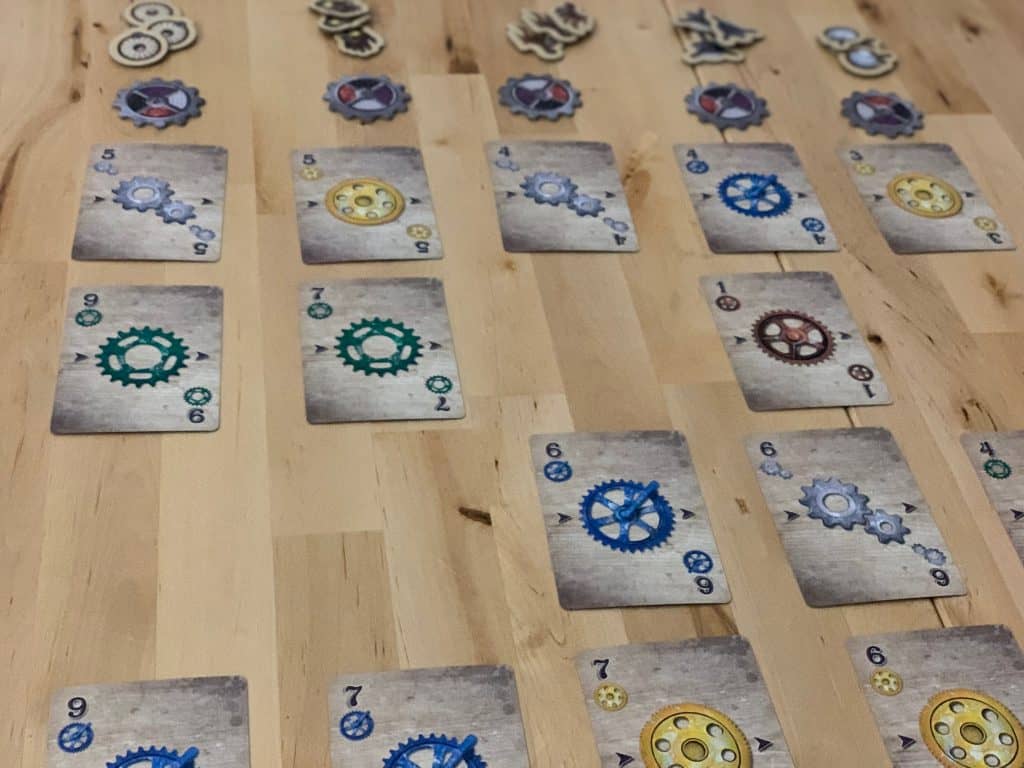
The sparks are another interesting mechanic, and a necessary one to balance out some of your options. You absolutely must use them when possible (especially for overplaying cards later in the game), which results in something of a munchkin feel as you calculate how many actions people have in their back pocket and when they might use them.
More than anything, though, this is a puzzle game and it won’t sit well with everyone. That’s not a negative aspect of the game necessarily, but it’s an important factor to remember. It’s not an abstract game, but it’s close.
The Bottom Line
Gearworks is a great game. It’s well produced, with beautiful components and artwork, clever mechanics and clearly laid out rules that work really well. I had a lot of fun playing this game, but recommend you avoid playing at the full four player count.
SUMMARY & RESULTS
Gearworks is a well-made, engaging puzzle-strategy game that deftly combines sudoku style puzzle mechanics with card-driven area control.
7.5
Play

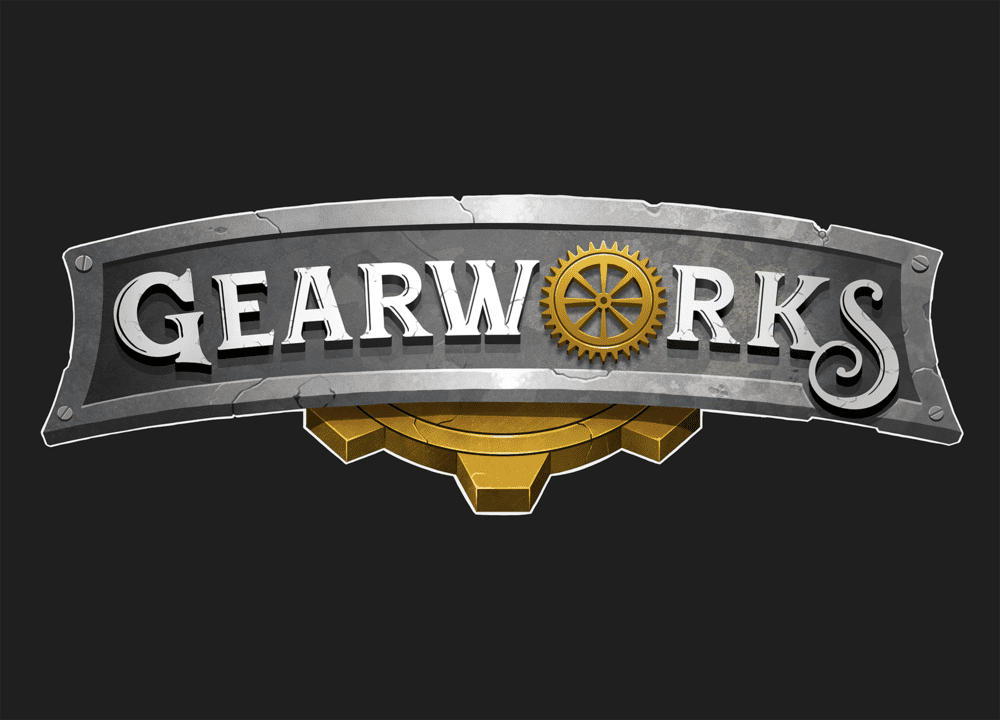



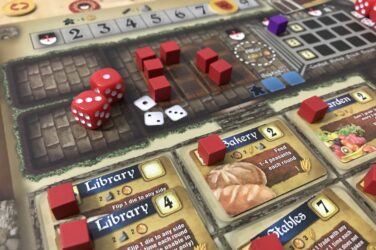


Show Comments